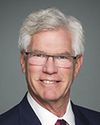We believe that social media are indeed used for recruitment. Crime groups—I am talking about established groups—find that posting their actions on social media honours their colours. People want to protect their ego on social media, so any group threatened by another has to retaliate to maintain its credibility on social media. Social media are also used to pay tribute to group members who have died or are in prison. In short, social media are used to display the group's colours and demonstrate its credibility: unfortunately they have become a new battleground.
Do we have the resources available? We're constantly monitoring social media very closely. Unfortunately, we can't control all the information circulating on social media, but our monitoring allows us to learn more and gain insight into criminals who flaunt themselves in public.
On the other hand, again, we do face some legal hurdles. When we see guns on social media, the investigations that follow are complex and it takes time to lay charges, as we have to determine the location and timing of the intended action and demonstrate that an actual weapon was used.




